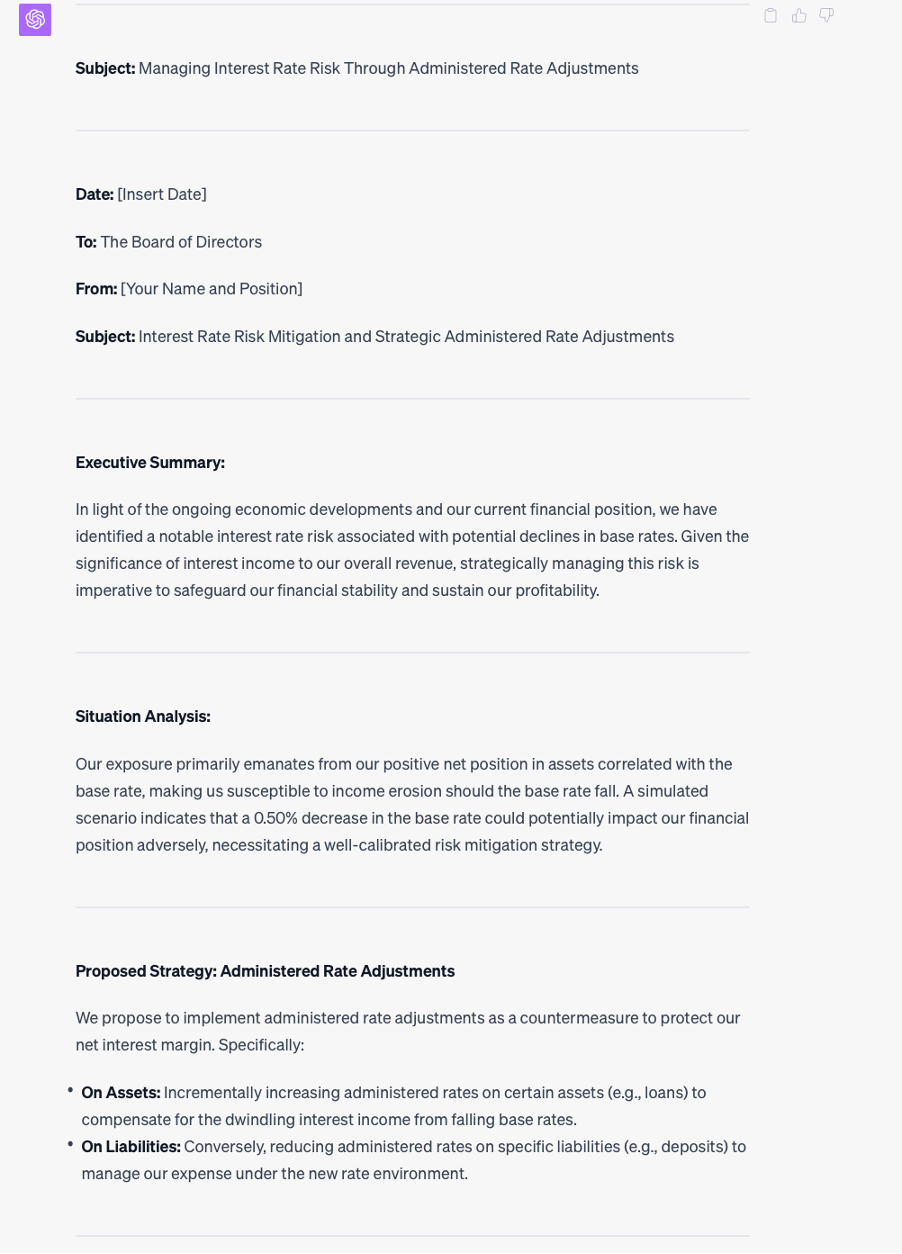AI in Finance: Tackling Basis Risk with GPT4
- William Webster
- Oct 10, 2023
- 4 min read
Updated: Jan 11, 2024
In today's rapidly evolving technological landscape, large language models (LLMs) stand as a testament to the strides we've made in artificial intelligence. However, harnessing their full potential in the professional realm remains a challenge. While tech companies excel in creating these advanced models, their grasp of the nuances of specific business sectors often falls short. To truly capitalize on the impending AI revolution, it's imperative to discern how LLMs can be integrated effectively within our workplaces to enhance both the quantity and quality of output.
As insiders in our respective industries, we possess unique insights that place us in an advantageous position to experiment with AI applications. Rather than waiting for the perfect solution, it's often more rewarding to dive in headfirst, exploring first-hand the benefits and limitations of these models. In this article, I aim to shed light on one specific use case: managing basis risk.
For those unfamiliar, basis risk, in its most basic sense, refers to the discrepancy when one pays and receives interest rates based on differing reference indices. It's a multifaceted risk, but for the sake of clarity, I've distilled its essence. Delving into how an LLM, specifically GPT-4, can aid in analyzing this risk has yielded some enlightening findings.
Facing Initial Hurdles
My exploration began with a straightforward approach: uploading a spreadsheet for the model to interpret. However, this method immediately ran into some snags. Surprisingly, GPT-4 struggled to comprehend the data I provided. This was unexpected, especially given the rave reviews I'd encountered regarding its data analysis capabilities.
Switching to the default mode—bypassing the advanced settings—yielded better results. GPT-4 seemed more adept at evaluating the data in this configuration.
Interestingly, I observed that spreadsheets, especially those with statistical data, don't mesh well with GPT's advanced data analysis. The model often requires significant prompting and guidance to navigate them effectively.
Undeterred, I ventured further by using the advanced data analysis feature. I prompted GPT-4 to convert the spreadsheet into a format it found best to use and thereby facilitate a better conversation about the findings. The outcome? A vast improvement, which I'll delve into in the subsequent sections.
GPT4:

Diving Deeper into Risk Analysis
I set the model on a task to gauge the risk in terms of delta value. Specifically, I wanted to understand the implications if the interest basis shifted by a mere 0.01%. GPT-4 accurately pinpointed the net basis risks, producing a potential profit and loss figure that could arise from such a change. Beyond just the numbers, the model went on to elucidate the constraints and limitations inherent to its analysis, providing a better understanding.
GPT4:

I then posed another challenge: a scenario analysis. I proposed a situation where the base rate decreased by 0.5%, while Libor increased by 0.25%. Without missing a beat, GPT-4 crunched the numbers, laying out the potential repercussions on profitability. Just as before, it highlighted certain caveats to consider in the analysis.
GPT4:

However, beyond the raw numbers and scenarios, understanding the 'why' is equally crucial. I asked the model to decipher the reasons behind such disparities in interest rates. Our exchange offered insights into the economic dynamics that might sway a balance sheet, rounding out a holistic picture.
GPT4:

Exploring Hedging Strategies with GPT-4
Our conversation progressed to potential strategies for hedging the identified risk. While
GPT-4 offered suggestions, they leaned more towards the generic, lacking the specificity I had hoped for. It felt as if the model was, metaphorically, hedging its own bets, casting a wide net rather than zeroing in on a direct solution. Maybe I should have probed more incisively, pressing for a more exact answer. It's an avenue I plan to explore more deeply in future discussions on hedging techniques.
GPT4:


One common approach to managing basis risk is adjusting the margin on financial products. For instance, one might consider reducing savings rates while raising borrowing rates. However, this strategy is far from straightforward, carrying its own set of advantages and pitfalls. When I prompted GPT-4 to unpack these, it responded, touching on several pivotal concerns.
GPT4:


To cap off our session, I asked the model to draft a memo for the board. The objective was to succinctly capture the risks we had dissected and propose potential measures to mitigate those exposures. While GPT-4's initial draft was competent, it would undoubtedly benefit from some fine-tuning.
Here’s the memo.
GPT4:



Key Takeaways using GPT-4 in this context
From this deeper dive into the capabilities of GPT-4, several insights emerged:
Embracing the Future: Any organization yet to experiment with GPT, even in a sandbox environment, is potentially missing out. The trajectory of GPT's impact remains somewhat nebulous, but its utility in swiftly identifying, analyzing, and elucidating risks is undeniable. By rapidly generating documents and explanations that would conventionally drain resources, GPT offers a glimpse into the future of business operations.
Balancing Expectations with Reality: Banking on AI to have all the solutions right out of the box will lead to disappointment. The quality of GPT's output can oscillate - sometimes it's stellar, other times less so. It underscores the importance of leveraging your own expertise to sift through the results.
Adeptness in Economic Analysis: GPT-4 consistently shines in its ability to dissect economic scenarios and their potential ripple effects on businesses. This isn't surprising, given its training on a wealth of textual data.
Versatile Documentation: GPT's proficiency isn't limited to drafting memos for board members. It can adeptly tailor content to resonate with diverse audiences, presenting a promising avenue for customizing internal communications.
In essence, while GPT-4 heralds a new frontier in AI-driven solutions learning how to apply it will be the big challenge going forward.
Commentaires